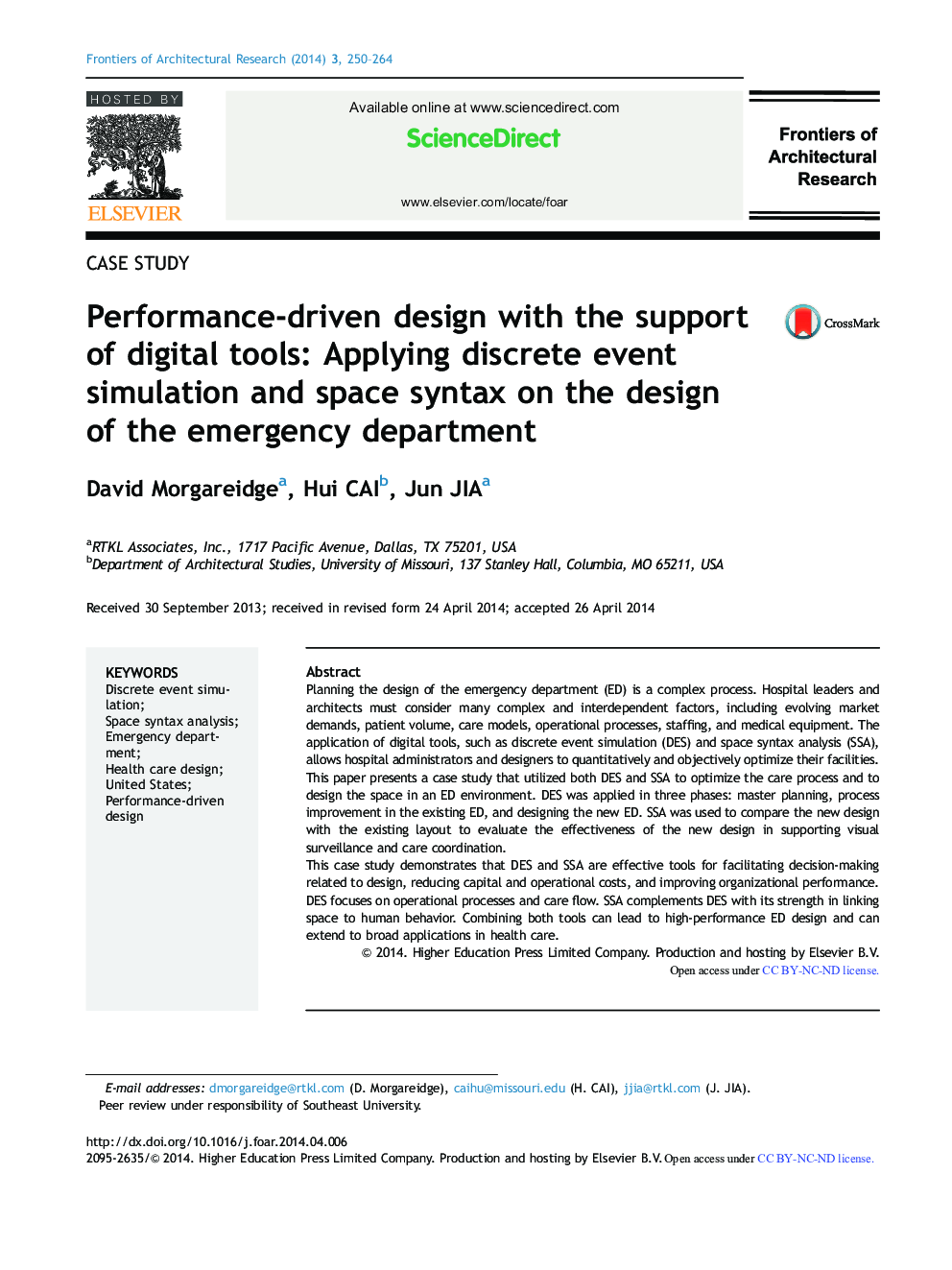| کد مقاله | کد نشریه | سال انتشار | مقاله انگلیسی | نسخه تمام متن |
|---|---|---|---|---|
| 270711 | 1429275 | 2014 | 15 صفحه PDF | دانلود رایگان |
Planning the design of the emergency department (ED) is a complex process. Hospital leaders and architects must consider many complex and interdependent factors, including evolving market demands, patient volume, care models, operational processes, staffing, and medical equipment. The application of digital tools, such as discrete event simulation (DES) and space syntax analysis (SSA), allows hospital administrators and designers to quantitatively and objectively optimize their facilities.This paper presents a case study that utilized both DES and SSA to optimize the care process and to design the space in an ED environment. DES was applied in three phases: master planning, process improvement in the existing ED, and designing the new ED. SSA was used to compare the new design with the existing layout to evaluate the effectiveness of the new design in supporting visual surveillance and care coordination.This case study demonstrates that DES and SSA are effective tools for facilitating decision-making related to design, reducing capital and operational costs, and improving organizational performance. DES focuses on operational processes and care flow. SSA complements DES with its strength in linking space to human behavior. Combining both tools can lead to high-performance ED design and can extend to broad applications in health care.
Journal: Frontiers of Architectural Research - Volume 3, Issue 3, September 2014, Pages 250–264
